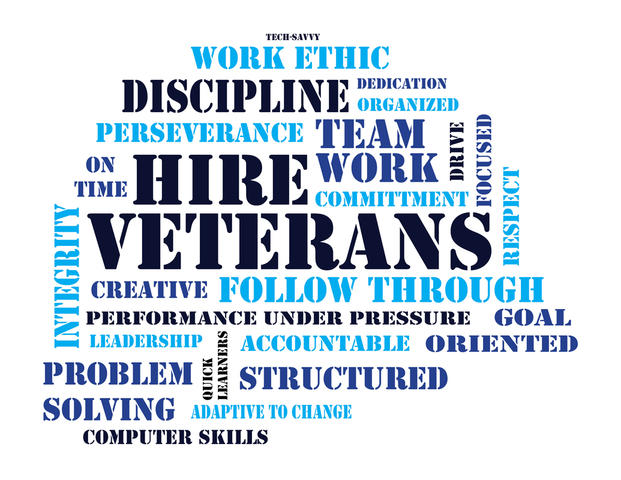Attracting veterans job candidates to your business requires some modification to existing marketing and systems.
The veteran candidate may or may not have ever applied for, and worked at, a civilian company, they might have skills which do not easily translate to the private sector, and they are looking usually for specific cultural qualities in their next employer. Here, are four business areas to adjust when building a veteran hiring initiative:
Branding
The ways your company positions itself to target customers, employees and other stakeholders should include your commitment to hire veterans for maximum impact. Your branding to the veteran community can reinforce:
- Your mission and vision as it relates to service, community, support and commitment. These are values that will relate to veterans seeking to work for companies who share the same ideals.
- Systems in place to enhance your connectedness to veterans and military families. Highlighting the strategy and tactics behind these systems is helpful.
- Positioning as a veteran-friendly company, calling attention to the systems you have invested in – and will invest in – to grow veteran employees in your company.
Marketing
Marketing to veteran job applicants is tricky. You’ll want to be bold and obvious about your desire to recruit former military personnel, yet sensitive to their needs and fears. Coming across as too aggressive can send the message that your interest is short-lived or a “test of the market.” Being too subtle can lead you to miss key applicants who seek to work for veteran-friendly companies. Tips for marketing to the veteran job applicant:
- Ensure you use appropriate graphics and imagery. Have a veteran on your team review all clip art and stock photos you use.
- Market across all mediums – from print, to social media – consistently with the same messaging, tone, and visuals.
- On-site marketing at job fairs and events should include veterans on the team already. Bring them to help job candidates see who’s already working for your company.
Onboarding
Assuming your company has enacted a consistent onboarding process for new hires, consider tweaking it a bit for your veteran employees. Ensure a smooth transition for your new veteran employee by adding onboarding features, such as:
- In your new hire packet, include a letter from the CEO, President, and their new manager welcoming the veteran employee to the company and thanking them for their service.
- Spell out the available resources your company has built to support them throughout their career at the company. You might include information about the Veteran Resource Group (if you have one), mentoring programs (internal and external to the company), and other veterans on their new team who can assist them in getting settled into the job.
- Suggest processes for getting help, if they need it. Offer the names and phone numbers of people in the company who they can reach out to for guidance. Provide clarity on the “chain of command” for concerns or assistance they might encounter. The more clarity you can provide, the better.
Leadership Development
If providing professional and leadership development tools and resources is important to your company, promote this with your veteran job candidates. Someone with a military background has been exposed to the most elite leadership training institution in the world – the United States Armed Forces. They will be attracted to a company that promotes leadership and one which supports its employees continuing to develop their skills. Some ways you can enhance your leadership development opportunities and communicate to veteran job applicants:
- Highlight the speakers, trainers and presenters who have taught classes, particularly those with a military background.
- Show the connection between leadership development and career advancement inside the company.
- Showcase veterans in your company who have advanced to leadership positions, articulating how they got there: What programs did they participate in? Did they teach others about leadership in the company? How was their leadership in the military valued in their civilian job?
Building and sustaining a veteran hiring process starts with commitment to the effort, and then modifying those aspects of your business systems to ensure the veteran community views your company as veteran-friendly and attractive as an employer.





